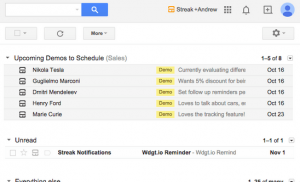— July 22, 2018

377053 / Pixabay
Knowing what searchers type to find your product or service might seem obvious, until you Google search a fitting phrase and your business doesn’t appear in the results.
Wait a minute. What gives? Why aren’t you showing for those Google keywords? Your competitor’s right there, mocking you with bright blue text. So obviously, you belong there too.
But there are hundreds, thousands, of ways people could search for you.
What’s the most important? How do you know what you should be ranking for?
We’ve got a five-step process to help you become your own keyword finder!
Step 1: Brainstorming
It might feel a bit overwhelming to get started, but don’t sweat it. You’re already on the right track by simply starting to Google relevant search words that came to mind.
Think about your searcher’s intent. What problem do people have that could be solved by purchasing your product or using your service?
Make a list of those headaches and simply jot down the ways you think someone would search for a solution.
Remember that any buyer’s journey has three stages: awareness, consideration and decision. Depending on what stage of the process someone is in (are they looking for resources, education, services etc.), they’ll have unique queries for each.
Explore this advice on selecting Google keywords for each stage of the buyer’s journey for more details on how to choose what belongs in each stage, but for now, consider your demographic’s biggest concerns as a whole.
Step 2: Making Keyword Predictions
Next, turn to Google to find more keyword suggestions.
Type in one of the proposed search terms and scroll down to the bottom of the search engine results page (SERP) to see “searches related to.” Do this for a few terms, each time, copying the eight suggested searches and pasting them in your own document or spreadsheet.
If you see your competitor somewhere, click on them and quickly hit the back button to take you back to the results page. First off, doing this tells Google your competitor’s link didn’t help answer your question. Really, that perk is only an added bonus, because your main objective was to see what content Google auto-generated under your competitors’ SERP result.
Whenever you “pogostick” back from a clicked link, Google will give you six other phrases “People also search for”, under that link, on the results page. Command C those bad boys and paste them on your spreadsheet.
Google Suggest is another free, easy to use resource. Once you start typing in a query in the Google keyword search bar, see what the search engine guesses you’re trying to say next. These are phrases others have searched and can springboard more ideas.
A great, free software for predicting next letter searches is UberSuggest. This program gives you short-tail keyword ideas for, say “marketing s”, variations such as “marketing software, marketing services, or marketing specialist.” This tool also shows you search volumes, to see how popular the query is in the United States.
Now compile all of your ideas in one master document. Share it with your coworkers and ask them their thoughts. Maybe your list will inspire them to offer their own suggestions. Call a thirty minute meeting to collaborate and finalize it.
Step 3: Confirm Your Findings with Support from Organic Data
Now, let’s make sure the words you picked are worth targeting.
For users who pay for online advertising through Google AdWords, the platform offers a nifty tool for keyword research called Keyword Planner. Insider secret, you actually don’t need to pay for ads to access the tool, but you do need an AdWords account. Paid users get more refined results, in terms of search volumes and bid prices, but you don’t need those full details to get what you need and skedaddle.
Enter up to three phrases from your brainstorming spreadsheet in the tool’s search bar and wait for a wide variety of suggested search terms. Don’t freak out when you get served hundreds of suggestions. Sort them by Google’s Keyword Volume to show the phrases in order of most searched per month.
It’s time to get picky. In the brainstorming phase, your hunt on Google Suggest offered low traffic phrases that might not be worth targeting. Now, using Keyword Planner, make sure those phrases seem really relevant and have a search volume greater than 500.
Selecting niche terms helps you to stand out, but make sure the traffic isn’t too low, or the competition too high, to justify your time. Competition is rated “low, medium or high.” When first starting out, stay away from high level phrases until you’ve mastered the low and medium targets.
Now that you have some volume stats and are aware of the competition’s ratings, let’s see what you’re already ranking for.
Use SEMrush’s Organic Ranking Keywords feature to see a list of words you’re already rocking the SERPs for, sorted by position. These are pages on your site that you obviously did something right with, because even without any formal keyword research, they’re already ranking!
Revisit these pages and note what you did differently there. Were they longer? Did they help thoroughly answer a big question in your industry?
All these figures can be exported out of SEMrush and added to your spreadsheet, or saved separately, for historical reference.
Step 4: Use Competitor’s Organic Data to Build Your List
Stick your competitor’s URLs in SEMrush too. Where are they already organically ranking? What’s so special about their ranking pages? Explore their website and really pay attention to those ranking pages. Just like on did on your own site, note things that stand out.
This is also a great way to grab more keyword phrases you could have missed and add them to your spreadsheet.
It might seem intimidating to see your competitors ranking for a lot of keywords, especially if you’re still learning about SEO and are just starting to hit the organic results yourself. But there is so much you can learn from the way others in your industry succeed on the SERPs.
Here’s four ways your competitor’s can actually help you rank!
Step 5: Develop a Complete Keyword Build to Optimize Around Your Keywords
Now that you’ve got your feet wet, are you ready to dive in? Become a Google search ranking hero by preparing an extensive list of new targets.
Establish your targets on a sheet of guidelines with SMART goals that you map out with your team.
This document is something that anyone in your company can reference and will help you stick to your keyword targets moving forward.
After you finalize your list of Google keywords, don’t wait to start optimizing your content with your new targeted terms and phrases.
Follow Some Best Practices for Keyword Research
For those who have never really did their own keyword research before, check out The Beginner’s Guide to Local SEO.
It’ll outline some ideas for compiling educational vs. transactional keywords, using helper words and synonyms and more.
Having trouble ranking even though you think your keyword game is pretty on-point. Maybe it’s not your keywords that are the problem. Perhaps it’s your lack of citations, reviews or on-site optimization.
Digital & Social Articles on Business 2 Community
(120)
Report Post




